Nervous system |
The nervous system is a complex network of nerve cells that spread throughout the body. Its function is to collect, store, interpret and respond to information gained inside and outside the body.
|
| The nervous system consists of two parts. The peripheral nervous system as pictured on the right and the central nervous system. The peripheral nervous system carries information to and from the central nervous system. |
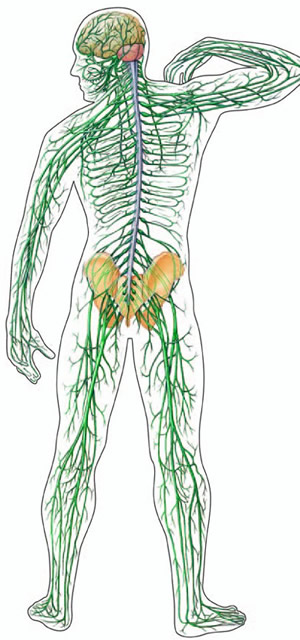 |
| The central nervous system is composed of the brain and spinal cord. It is responsible for processing information and sending it to different parts of the body. It is responsible for voluntary actions in which we have control over and have to think about and involuntary actions which involve no thought such as heart beat and breathing. |
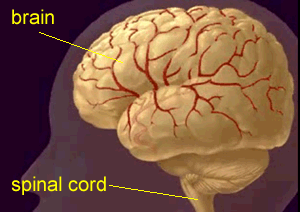
|
| Reflex actions require no input from the brain. They involve three nerve fibers that travel to the spinal cord and back. This is a mechanism designed to protect the body from immediate danger such as a burn. In such situations the body responds quickly and so the signal does not travel to the brain for processing but travels straight to the muscle for immediate action. Take a burn from a candle for example. Once the pain receptors detect the burn sensation a signal travels to the muscle via the spinal cord that results in the arm being withdrawn. The brain eventually receives the signal and is aware that the finger has been burnt. |
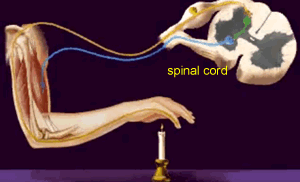
|
A nerve cell is a highly specialised cell that is involved with transmitting signals from one location to another. The shape of the nerve cell allows it to make many connections with many other nerve cells. This allows it to collect and transmit a great deal of information.
Electrical signals travel from the dendrites to the cell body and down the axon. The axon is insulated by small cells called Schwann cells that form a myelin sheath around the axon. |

|
| A cross section of a healthy axon shows how the Schwann cell wraps itself around the axon. |
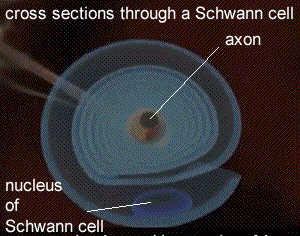
|
| The signal travels quickly in nerves with a myelin sheath. Schwann cells have small gaps between them as they are wrapped around the axon. The small gaps are called nodes of Ranvier and the signal travels from one node to another. This increases the speed of the signal. |
 |
| How do nerves communicate with each other? Through chemical messengers called neurotransmitters. Neurotransmitters are chemicals that are released by one nerve in response to a signal, travel over a small gap, called a synapse, to another nerve to continue the signal. |
| As shown on the right, these neurotransmitters are kept in small vesicles. |
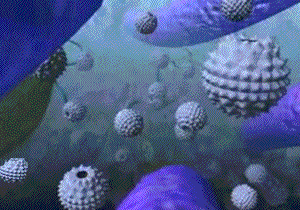
|
| When a stimulus reaches the end of the axon the vesicles release the neurotransmitter into the synapse where it locks onto receptors on the membrane of the opposite nerve. |

|
| This causes the stimulus to continue along the nearby nerve. The process is summarised on the right. |
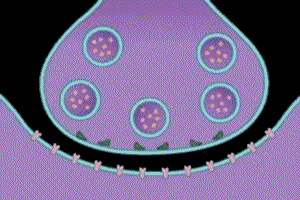 |
|
| 1) How is the myelin sheath around the axon formed? |
| 2) How does the signal travel down a myelinated axon as compared to one without myelin? |
| 3) The myelin sheath increases as we grow. Explain why small children have slower reaction times compared to teenagers. |
| 4) Multiple sclerosis is a disease that is characterised by the degradation of the myelin sheath around nerves. Suggest why patients suffer from memory loss, imbalance and slow reaction times? |
| 5) Explain how the signal travels from the dendrites of one nerve cell to the dendrites of another. Mention the words, action potential, axon, synapse, neurotransmitter. |
6) How is a nerve cell similar to a wire?
How is it different? |
| How is a reflex action different from other responses to external stimuli? |
| What is the purpose of a reflection action? |
| How many nerve cells are involved in a reflex action and how is this different to other responses to external stimuli? |








